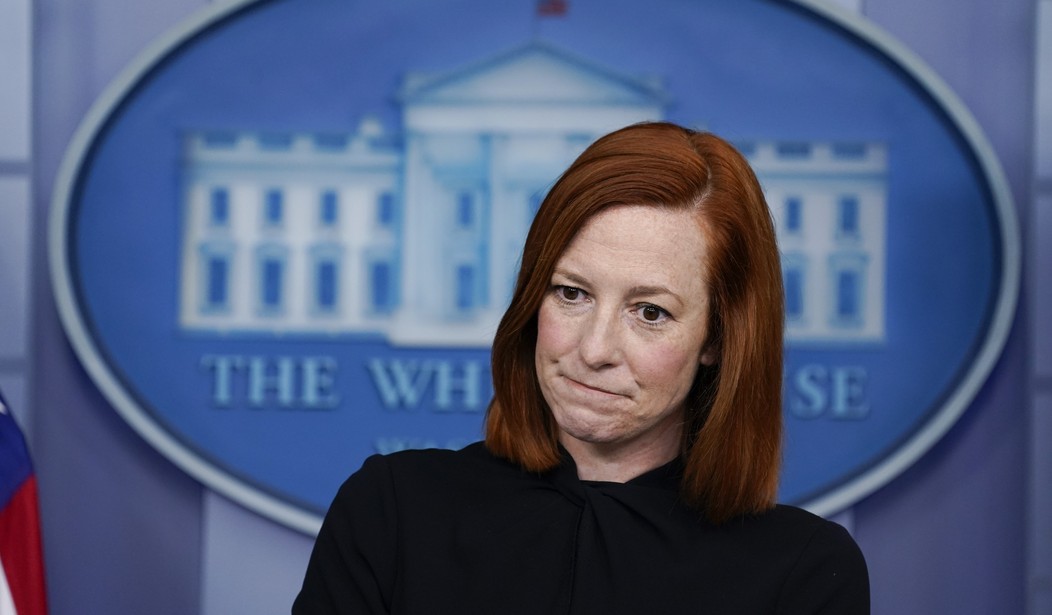More narrative shaping from the Left, only this time it’s not CBS News parroting the talking points of the anti-gun lobby but the president’s mouthpiece. During the daily White House press briefing on Monday, Jen Psaki was asked about the rising number of violent crimes across the country and whether or not we have a “crime problem.”
“Well, I would say certainly there’s a guns problem,” Psaki replied, adding “and that’s something the president would say. And there are communities where local violence and community violence is an issue, and that’s one of the reasons why we have proposed and are now implementing funding for community violence intervention programs across the country.”
Check out Psaki’s entire response in the video below:
Psaki just blamed the rise in crime across the country on a lack of gun control. pic.twitter.com/ndg4j87ZSI
— The First (@TheFirstonTV) May 24, 2021
Psaki then pivoted to gun control, saying that Joe Biden will continue to push for Senate passage of universal background checks as well as advocating for “actions in states where we have seen the greatest level of activism over the past several years.”
In other words, Biden’s going to push for more gun control in states that already have a lot of gun control laws on the books, doubling down on a failed strategy and trying to fight crime by targeting legal gun owners with more restrictions on their right to keep and bear arms.
While the White House press secretary claimed we have a “guns problem,” when Psaki was asked specifically if the record-high gun sales that have taken place over the past year are responsible for the rise in violent crime, she demurred from giving a concrete answer, instead saying she’d have to check with staff to find out what they know. Gun control activists won’t be happy with that part of Psaki’s answer, since they’re busy pushing the narrative that the increase in gun sales is directly responsible for the increase in violent crime.
There’s virtually no evidence that the millions of legal gun purchases is what’s driving the increase in violent crime, particularly since we’re seeing shootings and homicides increase in cities and states that already have restrictive laws on the books.
I would argue that what we’re really seeing is an increase in lawlessness, fueled in large part by the COVID lockdowns that led to the shuttering of the court system in many cities, and budget cuts to law enforcement agencies and a resulting pullback on the part of many police in response to the Defund the Police movement. After all, it’s not just violent crime that’s on the rise. Traffic fatalities too increased substantially in 2020, even though there were fewer drivers on the road.
“It is tragic that in the U.S., we took cars off the roads and didn’t reap any safety benefits,” Lorraine Martin, NSC’s president and CEO, said in a statement.
… The National Highway Traffic Safety Administration (NHTSA), a government agency, has not yet released its analysis of deaths in 2020, but its preliminary results for the first 9 months of the year show similar trends, with total deaths and death rates both up noticeably.
NHTSA said it was “too soon to speculate on the contributing factors” of the uptick.
Martin, the president of NSC, says her organization has not finished its analysis of the causes either.
But she told NPR that it’s clear that with fewer cars on the road, risky driving behaviors went up.
“And we know what those risky driving behaviors are, even though we haven’t done all the analysis of these specific crashes,” she says. “We know it’s speeding. We know it’s driving without a seatbelt. And we know it’s driving impaired … and distracted.”
Alarm bells about that risky behavior started sounding early in the pandemic. For instance, multiple data sources indicated a noticeable increase in speeding as emptier roads tempted drivers to stomp on the accelerator.
Arity, a mobility data analytics company that spun off from insurance giant Allstate, reports that speeding has stuck around as driving resumes.
“We are still seeing increased speeds on the road even as miles driven returns to normal, particularly during morning and afternoon rush hours,” the group wrote in February.
It’s not just easy for gun control activists to point to rising gun sales and rising violent crime and claim the two are connected. It’s important for them to do, even if there’s no evidence to back up their assertions. Support for gun control is declining, and activists are growing increasingly frustrated over the lack of progress at both the federal and state level. Sure, states like Washington and Oregon have passed some awful gun storage laws that will impact the ability of gun owners to defend themselves in their home, but compared to the gains made by Second Amendment activists at the state level (including four states adopting Constitutional Carry and a number of other states approving Second Amendment Sanctuary legislation), 2021 isn’t shaping up to be the beginning of a Golden Age of Gun Control that anti-gun activists were hoping for.
In other words, don’t expect Jen Psaki, Joe Biden, or any other supporter of gun control to acknowledge that the problem isn’t guns, but a growing indifference to the rule of law itself (which has been aided and abetted by the Left’s demonization of policing and the criminal justice system, even as they push to put new non-violent offenses on the books). The facts aren’t helpful to their cause, so they’ll go with the fiction that legal gun sales are to blame for the failures of their own anti-gun, anti-police, and anti-rights ideology.









Join the conversation as a VIP Member